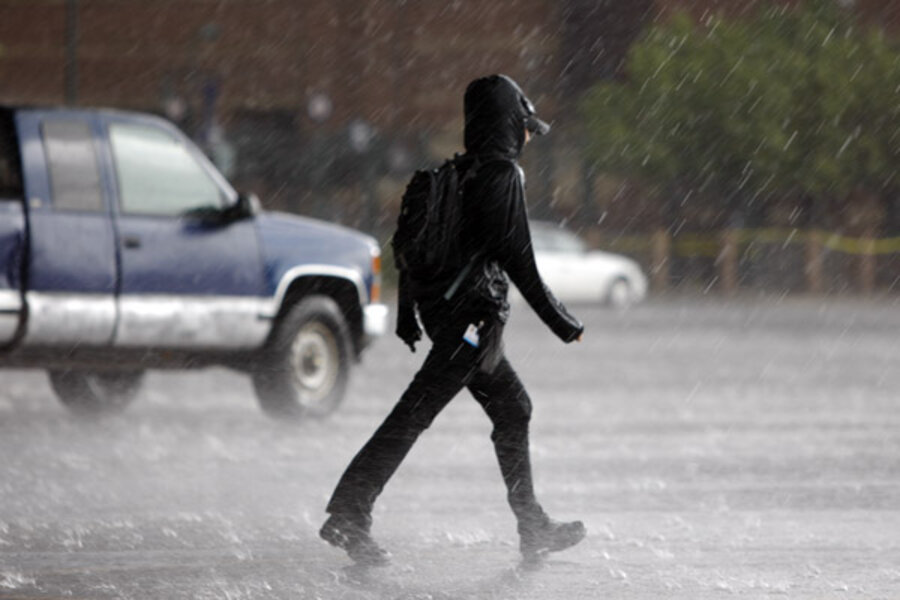Scientists study time of day for US summer rains
Loading...
Summer rains can quickly spoil a cookout or trip to the zoo, and their seeming unpredictability makes them hard to plan for. But a new study shows the time of day the heavens are most likely to open up in different parts of the country.
Toshihisa Matsui, of the University of Maryland, Baltimore County, and his colleagues used hourly rain-gauge data taken across the United States from a database spanning the 10 years from 1998 to 2007 to looks for local peaks in summer rainfall.
They found a clear early afternoon peak over the Rocky Mountains that got later in the day moving eastward over the Great Plains until the peak moved into the early morning in the Midwest.
IN PICTURES: Tornadoes
"In the eastern Great Plains and Midwest, for example, tornadic thunderstorms often occur even late in the afternoon and evening, while such tornadic thunderstorms are extremely rare in the Front Range of the Rockies at that time of the day," said Roger Pielke, Sr., a co-author of the new study.
The strongest peak signals came in the interior of the Florida peninsula, which hit between 4 p.m. and 6 p.m. — as any Floridian or regular vacationer can attest to. The southern and eastern regions of the United States experienced early afternoon peaks in rainfall.
The peaks occur in the afternoon in the Rockies and Florida because that is the time when convection created by warm air moving up mountain slopes or by sea breezes, respectively, is most active.
"This is the time of day in which heating from the sun produces the warmest temperatures in the lowest levels of the atmosphere," Pielke told OurAmazingPlanet in an e-mail. "This provides the fuel, along with water vapor from evaporation from the soils and transpiration from vegetation, for the cumulus cloud rainfall."
The peak moves later in the day moving eastward from the Rockies because of prevailing winds, which blow the storms from west to east.
And "since the air mass east of the Rockies in the warm season is generally rich with water vapor, these deep cumulus clouds can feed on this energy and continue to develop as they propagate eastward even through the night," Pielke explained.
The rainfall peaks indicate that those are the times when summer storms are at their strongest in various regions, with important implications for storm warnings, as well as activity planning. In the Midwest, for example, most people are sleeping during the early morning peak times, which suggests that tornado watches and warnings may not be heard in time. Over in Florida, the late afternoon clockwork-like rain showers mean an early arrival and early departure to and from amusement parks may be in order.
The study will be detailed in an upcoming issue of the journal Geophysical Research Letters.
- The World's Weirdest Weather
- Wow! Airplanes Punch Holes in Clouds, Create Rain
- 12 Twisted Tornado Facts
IN PICTURES: Tornadoes





